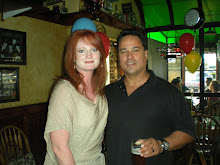Donna Twardy
February 28, 2009
Journal #5
Bull, Glen (April 2006). Collaboration in a web 2.0 environment. Learning and Leading With Technology, Retrieved February 26, 2009, from http://www.iste.org.-AM-Template.cfm.Section=April_No_07&Template_
This was a very interesting article about how exposure to a Web 2.0 environment can help students in the classroom. Web 1.0 means that the users have to go to the information they want conversely, a Web 2.0 situation means that the information comes to the users. This includes blogs and community shared resources.
By using an RSS (Really Simple Syndication), which is available on quite a few websites, students can easily access and share common interests and resources. “Syndicated feeds can be used to follow multiple student postings, facilitate collaborative writing, share images associated with group projects, and track news topics related to a subject area”.
Another useful collaboration tool that was discussed in the article was a web based word processor. Students can use this tool for group projects because it allows them to jointly edit a document. Some examples of this are the Writely and Googledocs programs. Once the document is published, it can be followed through an RSS reader on a blog. Other applications that students can use are joint checklists and photo sharing.
1. What are the benefits of the above-mentioned programs?
The programs are easy to learn, free, and can be accessed form any computer with an internet connection. They encourage collaboration among students and also promote their digital citizenship. These types of skills prepare them for the workplace.
2. What grade level can students start using a web 2.0 environment?
Students in first grade can be introduced to the basic document sharing programs. For example, they can make an Igoogle homepage and learn how to type a document into GoogleDocs to share with other students. They can also access it from home with their parents help. This will encourage them to write and help each other to work on group projects.
Subscribe to:
Post Comments (Atom)




This comment has been removed by the author.
ReplyDelete